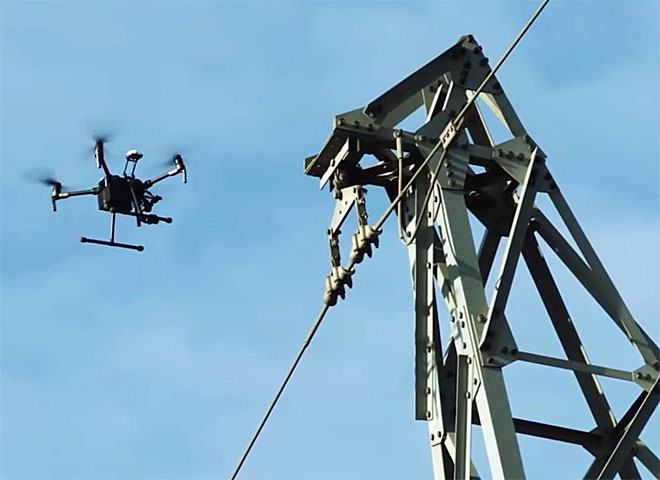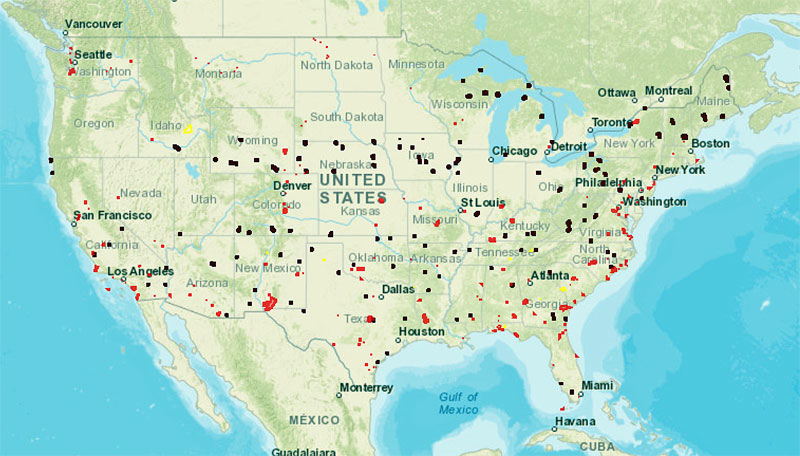
At the request of U.S. national security and law enforcement agencies, the Federal Aviation Administration (FAA) is using its existing authority under Title 14 of the Code of Federal Regulations § 99.7 – “Special Security Instructions” to address concerns about unauthorized Unmanned Aircraft Systems (UAS), or drone operations over seven Department of Energy (DOE) facilities.
The FAA and DOE have agreed to restrict drone flights up to 400 feet within the lateral boundaries of these sites:
- Hanford Site, Franklin County, WA
- Pantex Site, Panhandle, TX
- Los Alamos National Laboratory, Los Alamos, NM
- Idaho National Laboratory, Idaho Falls, ID
- Savannah River National Laboratory, Aiken, SC
- Y-12 National Security Site, Oak Ridge, TN
- Oak Ridge National Laboratory, Oak Ridge, TN
The airspace restrictions are shown in an FAA Notice to Airmen (NOTAM) and further details about where drone flights are restricted can be viewed here.
These UAS National Security restrictions are pending until they become effective on December 29, 2017.
There are only a few exceptions that permit drone flights within these restrictions, and they must be coordinated with the individual facility and/or the FAA.
To ensure the public is aware of these restricted locations, the FAA has created an interactive map online.

The link to these restrictions is also included in the FAA’s B4UFLYmobile app.
The app will be updated within 60 days to reflect these airspace restrictions.
B4UFLY Mobile App
B4UFLY is an easy-to-use smartphone app that helps unmanned aircraft operators determine whether there are any restrictions or requirements in effect at the location where they want to fly.
B4UFLY is available for free download in the App Store for iOS and Google Play store for Android.

Key features of the B4UFLY app include:
- A clear “status” indicator that immediately informs the operator about the current or planned location. For example, it shows flying in the Special Flight Rules Area around Washington, D.C. is prohibited.
- Information on the parameters that drive the status indicator
- A “Planner Mode” for future flights in different locations
- Informative, interactive maps with filtering options
- Links to other FAA UAS resources and regulatory information
For more information, view the B4UFLY Q & A (PDF).
Additional information, including frequently asked questions, is available on the FAA’s UAS website.
Operators who violate the airspace restrictions may be subject to enforcement action, including potential civil penalties and criminal charges.
This is the first time the agency has placed specific airspace restrictions for unmanned aircraft, or “drones,” over DOE sites.
The FAA has placed similar airspace restrictions over military bases that currently remain in place, as well as more recently issued UAS flight restrictions over 10 Department of Interior facilities, including several large dams and iconic landmarks.
(Did you get a new unmanned aircraft for the holidays? Stay off the naughty list! Courtesy of the FAA and YouTube. Learn more about UAS drone operation requirements at http://www.knowbeforeyoufly.org/)
The FAA is considering additional requests from other federal security agencies for restrictions using the FAA’s § 99.7 authority to support national security and defense, as they are received.
The text of the NOTAM is as follows:
FDC 7/6429 FDC SECURITY SPECIAL SECURITY INSTRUCTIONS FOR UNMANNED AIRCRAFT SYSTEM (UAS) OPERATIONS FOR MULTIPLE LOCATIONS NATIONWIDE.
THIS NOTAM SUPPLEMENTS THE UAS-SPECIFIC SPECIAL SECURITY INSTRUCTIONS DEFINED BY FDC 7/7282 AND IMPLEMENTED PURSUANT 14 C.F.R. 99.7 AND HAVE BEEN APPLIED TO AIRSPACE OVER ADDITIONAL NATIONAL SECURITY SENSITIVE FACILITIES.
THE UPDATED LIST OF AFFECTED AIRSPACE AND ASSOCIATED PROTECTED LOCATIONS, AND OTHER IMPORTANT INFORMATION ARE PROVIDED AT THE FOLLOWING FAA WEBSITE: HTTP://UAS.FAA.OPENDATA.ARCGIS.COM.
SEE FDC 7/7282 FOR COMPLETE INFORMATION ON THESE SPECIAL SECURITY INSTRUCTIONS. 1712290001-1902012359
Learn More…
















